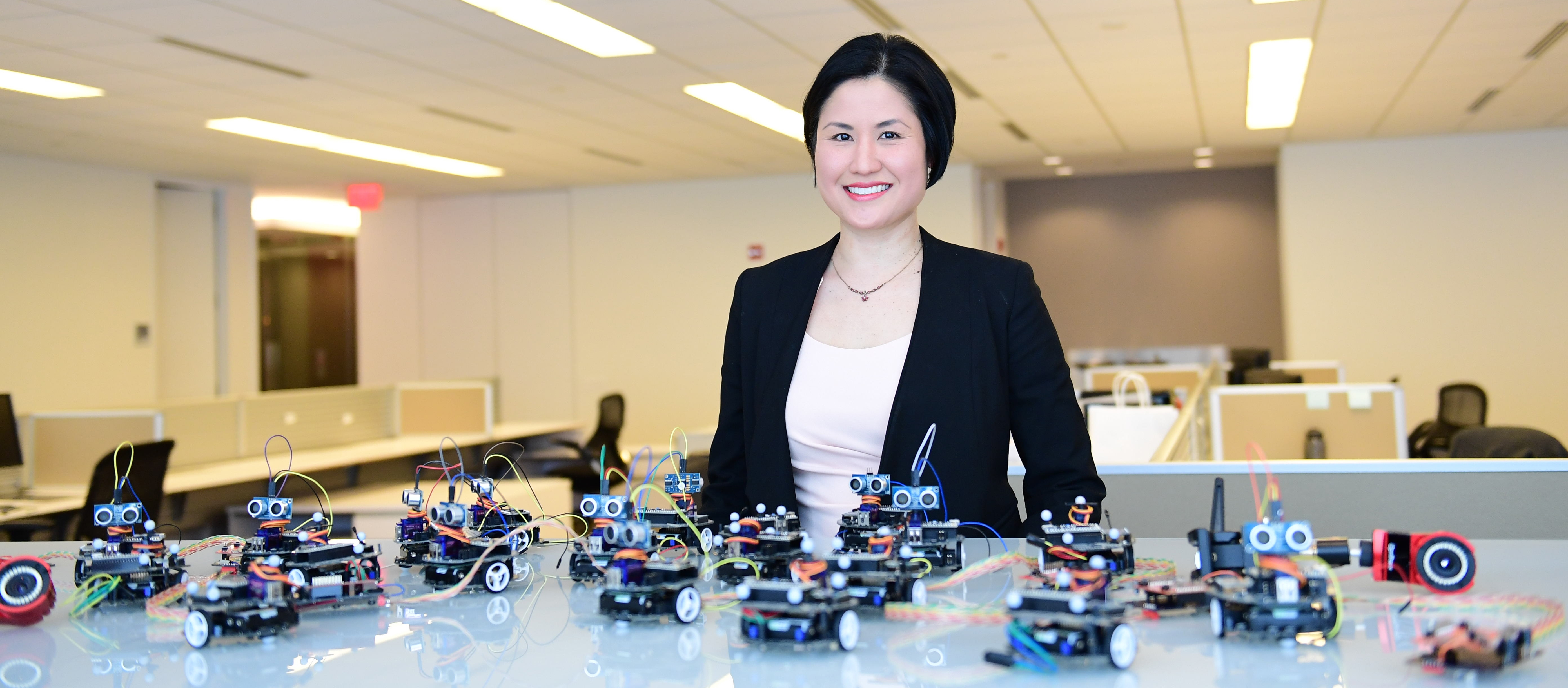Automotive Algorithms: Small scale traffic solvers
May 20, 2019

For decades, automobiles were predominantly composed of mechanical systems under the purview of mechanical engineers, who have kept our vehicles running efficiently. Now, complicated electronic systems, communication needs, new safety features, and automation are bringing more electrical and computer engineers into the field. Virginia Tech ECEs are tackling vehicular issues at every level—including traffic control, engine optimization, vehicle communication, and electric vehicle battery charging.
When an emergency vehicle comes screaming down the road, even levelheaded, law-abiding drivers can make rash, sometimes dangerous decisions. ECE’s Tam Chantem, an assistant professor, is designing a semi-automated emergency response system that can guide emergency and civilian drivers on the best action to take in these situations. She and her team have built a testbed and a fleet of small robots that follow the time-continuous, car-following Intelligent Driver Model to capture how humans drive on highways and in traffic.
When traffic is interrupted by emergency signals, the way drivers react depends on certain factors like the time of day and the direction the emergency vehicle is traveling. Chantem and her team are mapping these situations and building models that reduce response time and increase the safety of all vehicles.
“We can calculate the last possible moment a vehicle can safely cross an intersection,” said Chantem. “And this feeds into the framework for how an ambulance can best navigate that intersection.”
When they compare their techniques with current practices, Chantem and her team—assistant professor Ryan Gerdes and graduate students Pratham Oza and Mahsa Foruhandeh—have shown that their system can achieve faster travel times and provide more space around emergency vehicles.
Security versus efficiency
“When you rely heavily on technology, you have to think about security from the outset,” said Chantem. “We’re essentially re-thinking the way we design systems so they can be more resilient from the beginning.”
If you can’t do it from the beginning, there will be security holes that need to be addressed before the technology can be introduced on a wide scale, said Chantem.
Adaptive cruise control, for instance, can be used to form vehicle platoons—where autonomous vehicles cluster into a fleet, speeding up and slowing down as a unit. This allows more vehicles to pack into a smaller space, but it also exposes them to security risks, she explained. For instance, a malicious attacker could intentionally cause the system to shift operation back to humans.
“We have actually shown on our test-bed that this technology is not safe enough yet, even if you have collision avoidance implemented in your vehicles,” said Chantem, who is working to mitigate the risk.


